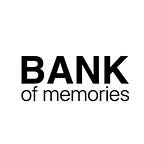Difference in web2 and web3 cloud storages
The world of cloud storage has been rapidly evolving over the last decade, with Web 2.0 and Web 3.0 being the two most significant phases of this evolution. While Web 2.0 brought a paradigm shift in the way people use the internet, Web 3.0 promises to revolutionize it even further with its decentralized and peer-to-peer architecture. In this article, we will discuss the differences between Web 2.0 and Web 3.0 cloud storage and how they are changing the way we store and access our data.
Web 2.0 is the second generation of the World Wide Web, which is characterized by the rise of social media, web applications, and user-generated content. Web 2.0 cloud storage is typically centralized, with data being stored on servers owned by large tech companies such as Google, Amazon, and Microsoft. Users can access their data through web-based applications or mobile apps, and the data is typically stored in a hierarchical file system.
One of the key advantages of Web 2.0 cloud storage is its convenience and accessibility. Users can access their data from anywhere in the world, as long as they have an internet connection. The data is also backed up automatically, ensuring that users do not lose their data due to hardware failures or other technical issues.
However, Web 2.0 cloud storage has some significant drawbacks. First, the centralized nature of the storage means that users have to trust the companies that own the servers to keep their data safe and secure. Second, the hierarchical file system can make it challenging to manage large amounts of data or collaborate with others on projects. Finally, the reliance on a centralized server means that there is a single point of failure, which can result in data loss or downtime.
Web3 cloud storage, on the other hand, is built on decentralized blockchain technology. Rather than storing data on centralized servers, Web3 cloud storage services use a distributed network of nodes to store and manage user data. This approach offers several advantages over Web2 cloud storage.
First, Web3 cloud storage is more secure and private than Web2 cloud storage. Since data is stored on a distributed network, there is no central point of failure, and data cannot be accessed or modified by unauthorized parties.
Second, Web3 cloud storage is more resilient than Web2 cloud storage. Traditional cloud storage services are vulnerable to downtime and service interruptions, which can be disruptive for users. With Web3 cloud storage, files are replicated across the network, which ensures that data is always available, even if some nodes go offline.
Finally, Web3 cloud storage is more cost-effective than Web2 cloud storage. Traditional cloud storage services charge users based on the amount of data they store and the number of requests they make. Web3 cloud storage services, on the other hand, use a token-based system, where users pay for storage and access using cryptocurrency. This approach can be more affordable for users, especially for those who need to store large amounts of data.
Web3 cloud storage represents a significant step forward in the evolution of cloud storage technology. With its decentralized architecture, increased security, and cost-effective pricing model, Web3 cloud storage is well-positioned to meet the needs of users in the age of decentralized applications and the blockchain.
Here comes the Bank of Memories! Bank of Memories is a hybrid storage platform that uses blockchain technology to store data. This means that instead of relying only on a central server or data center, the Bank of Memories stores data across a network of nodes, making it more difficult for hackers to access and compromise the data. Therefore, Bank of Memories combines the best from web2 and web3, offering an ultimate solution for cloud storaging!
Dont’ forget to check out our social media pages and the website to learn more!
